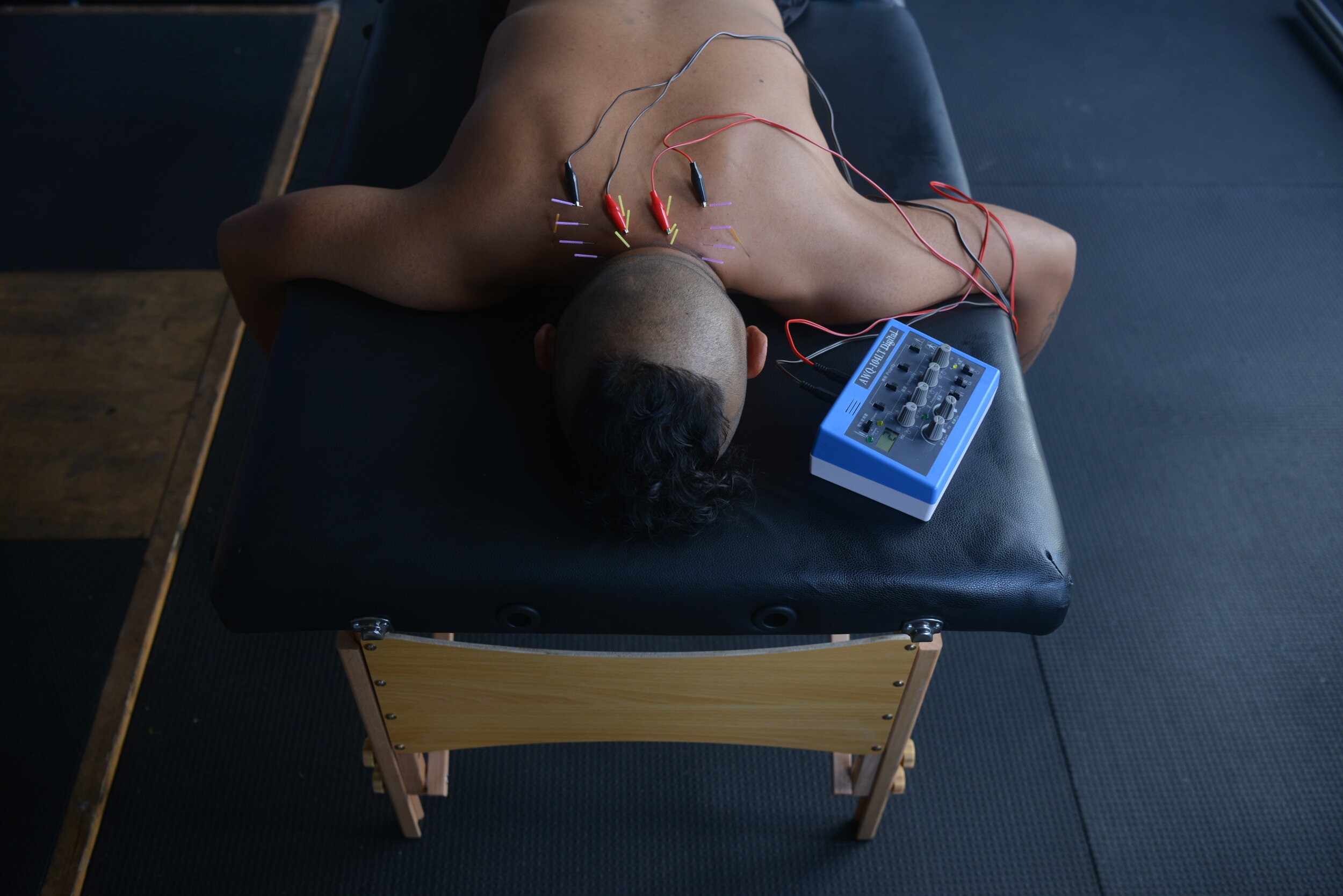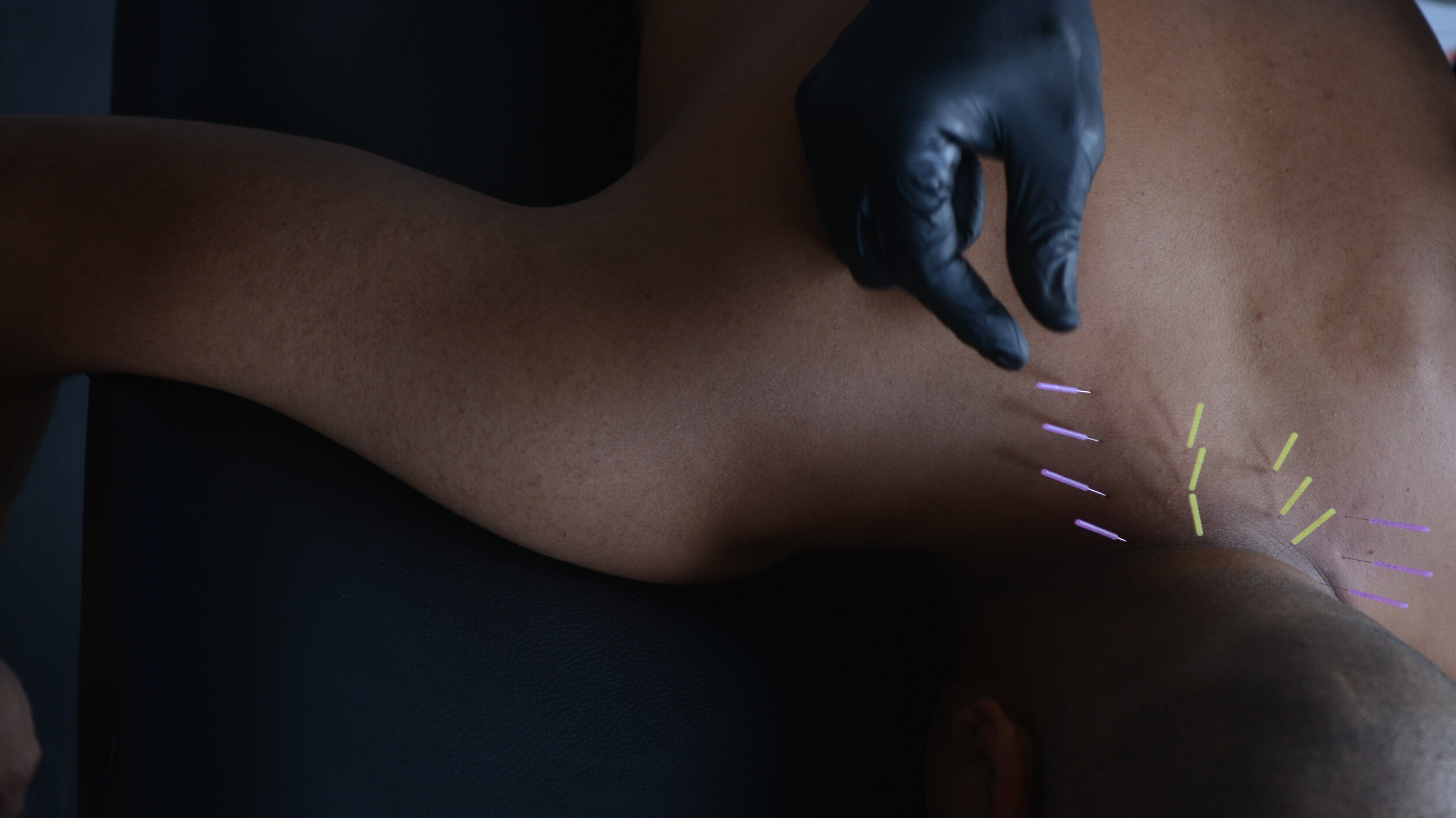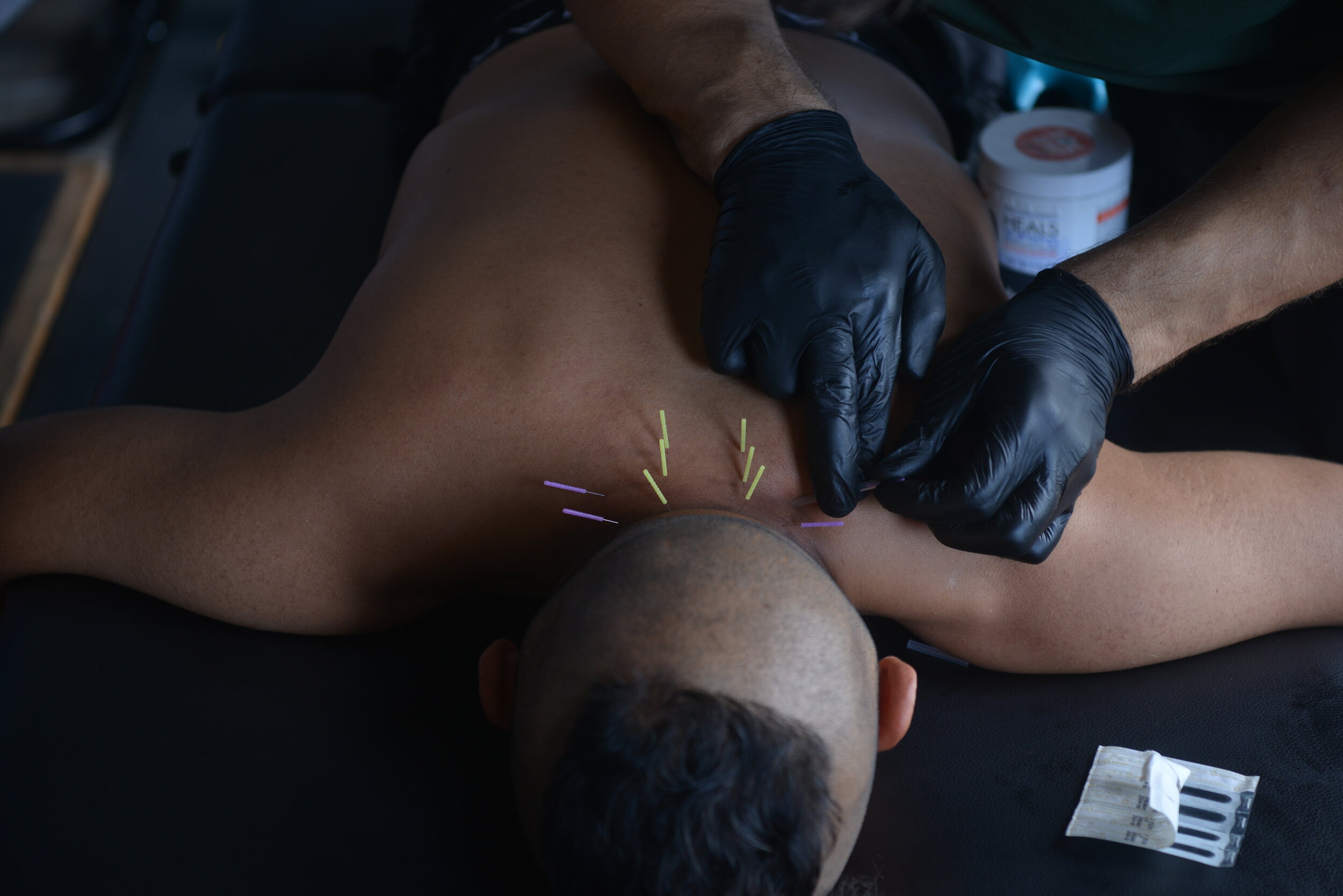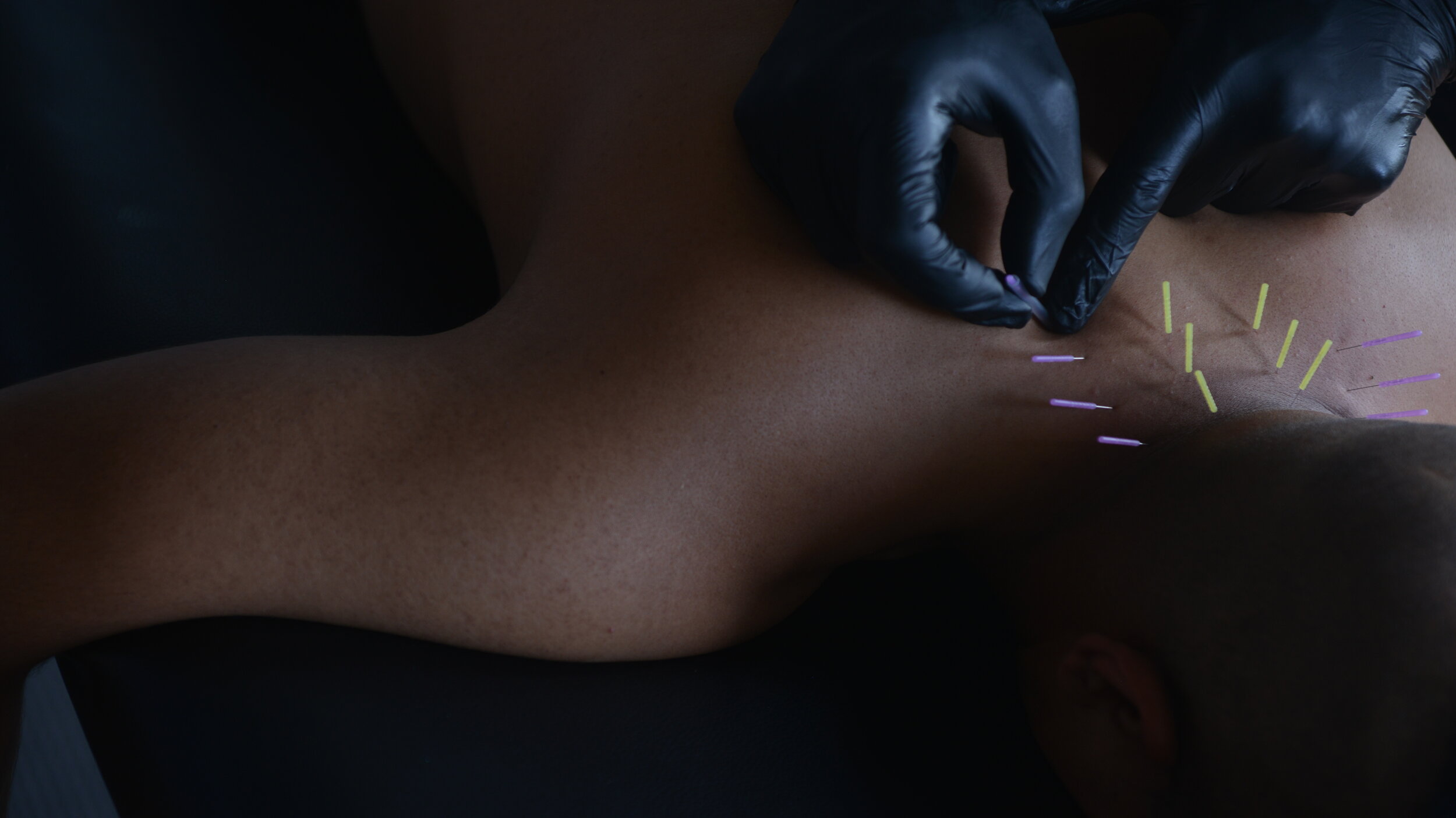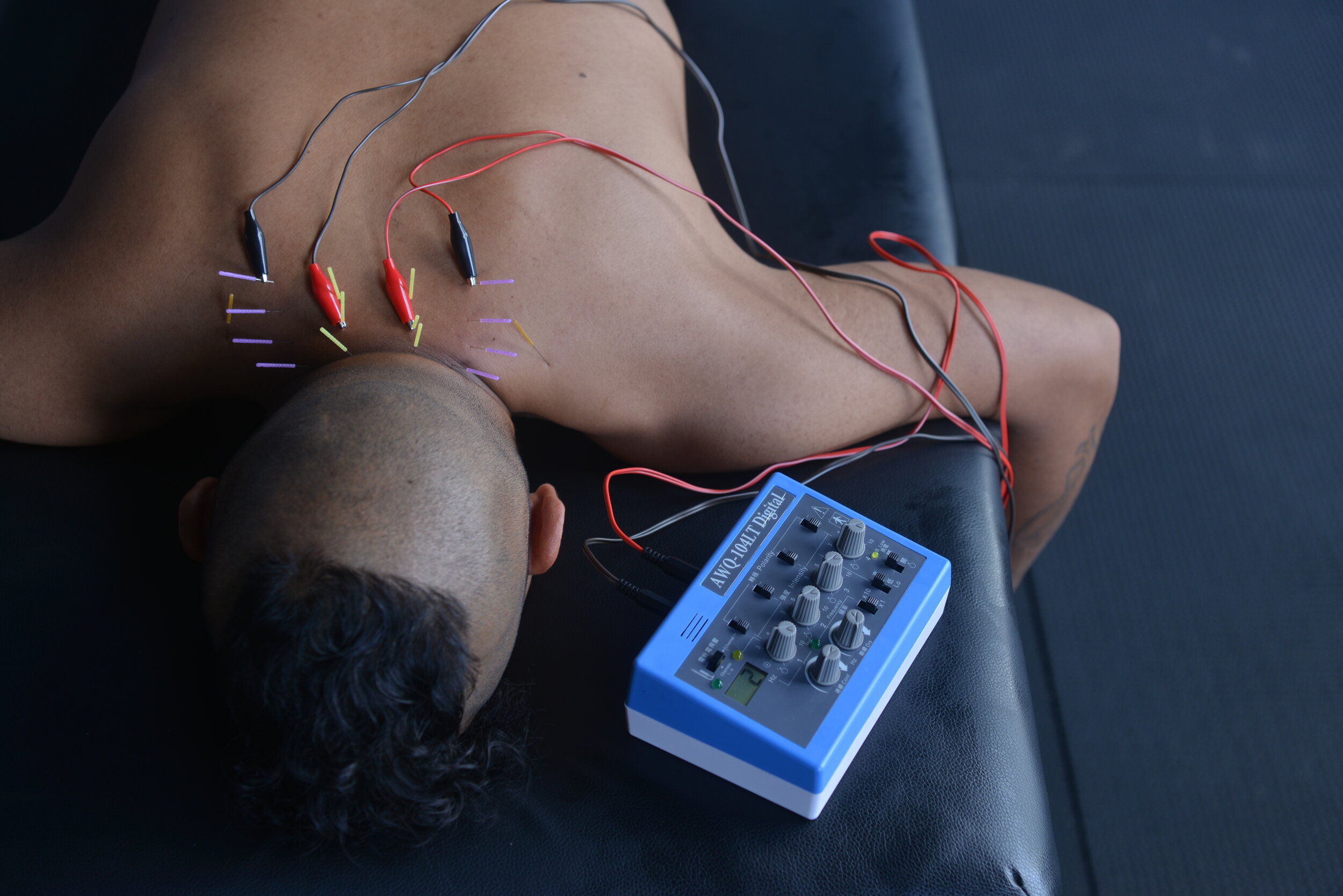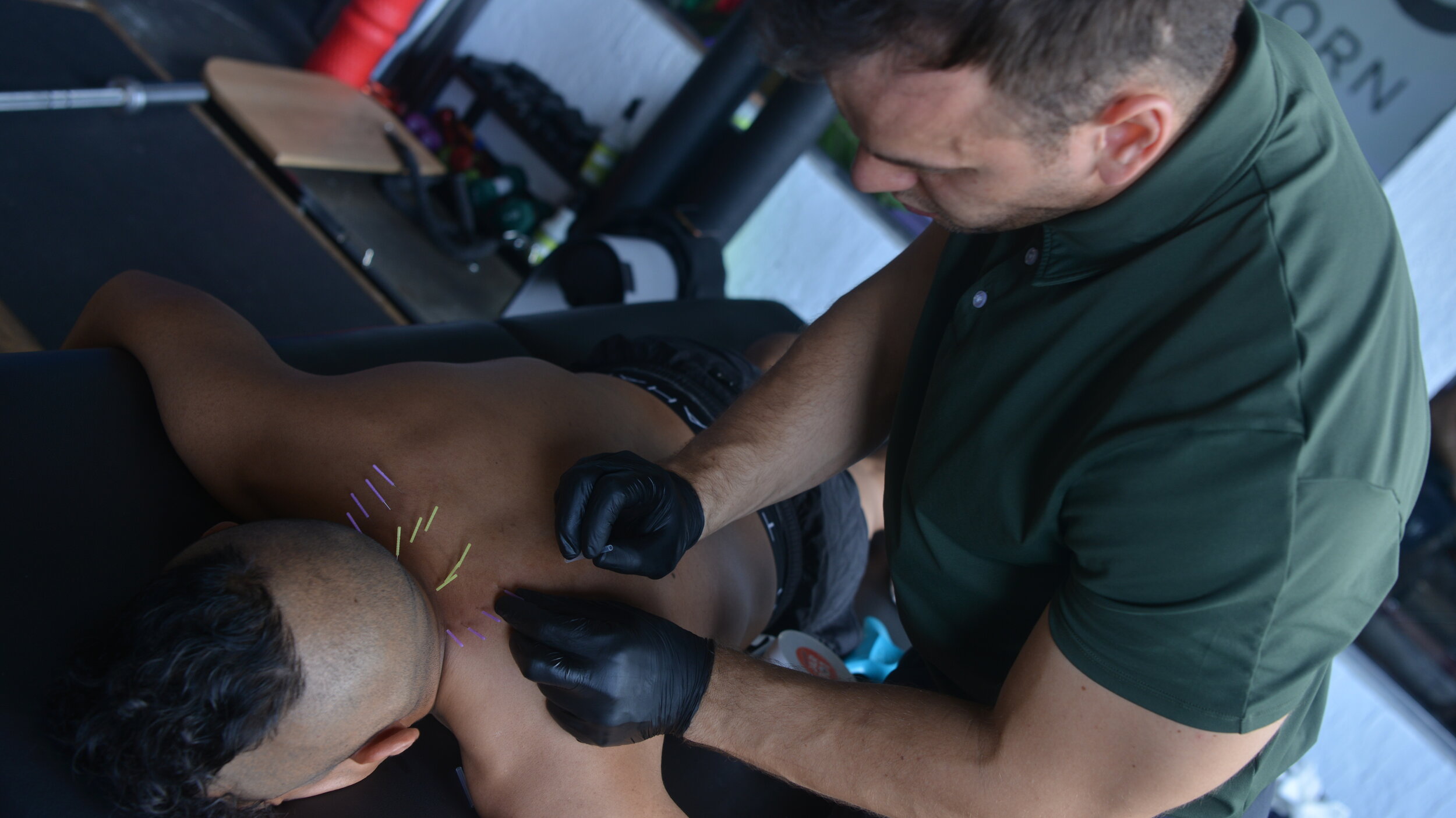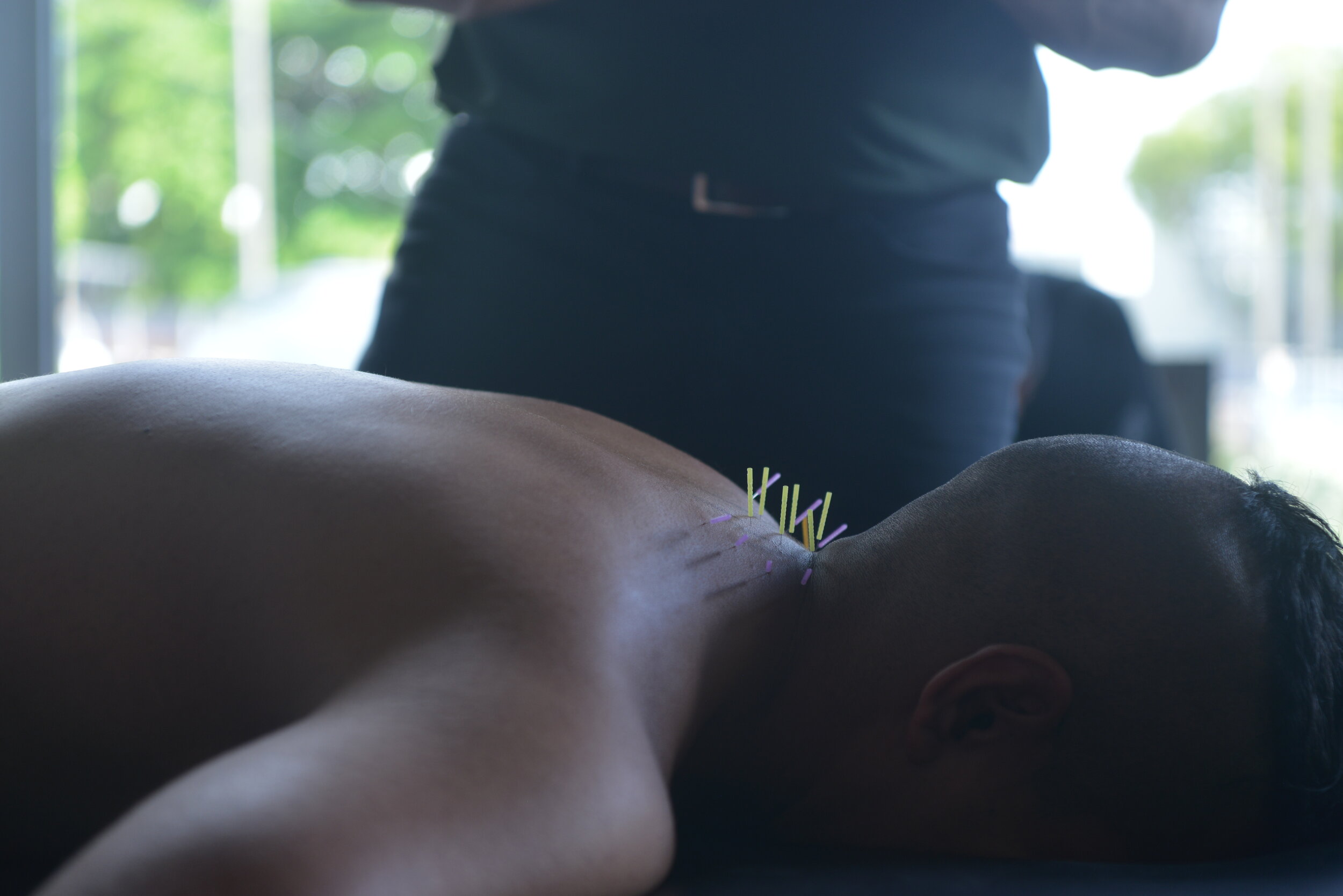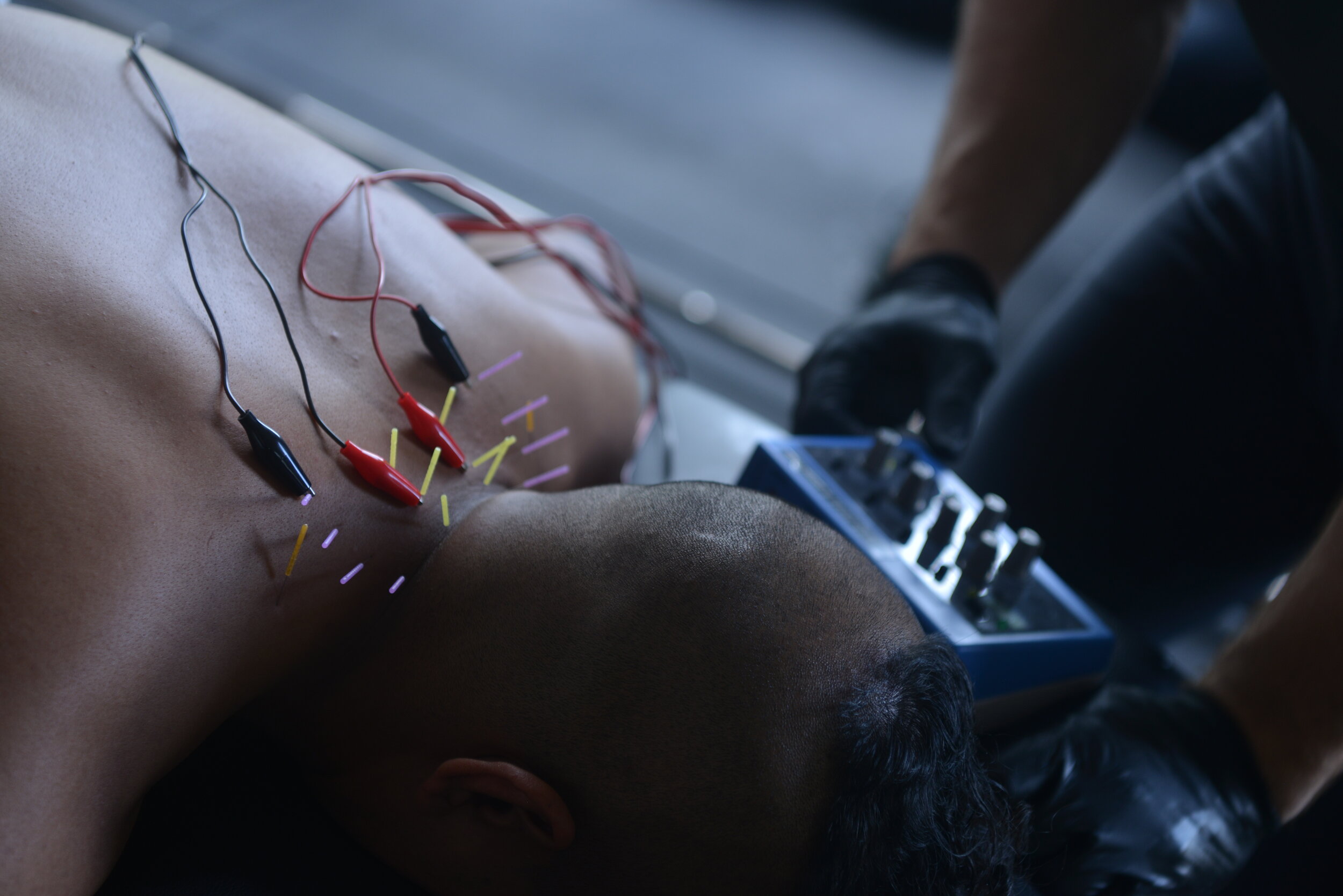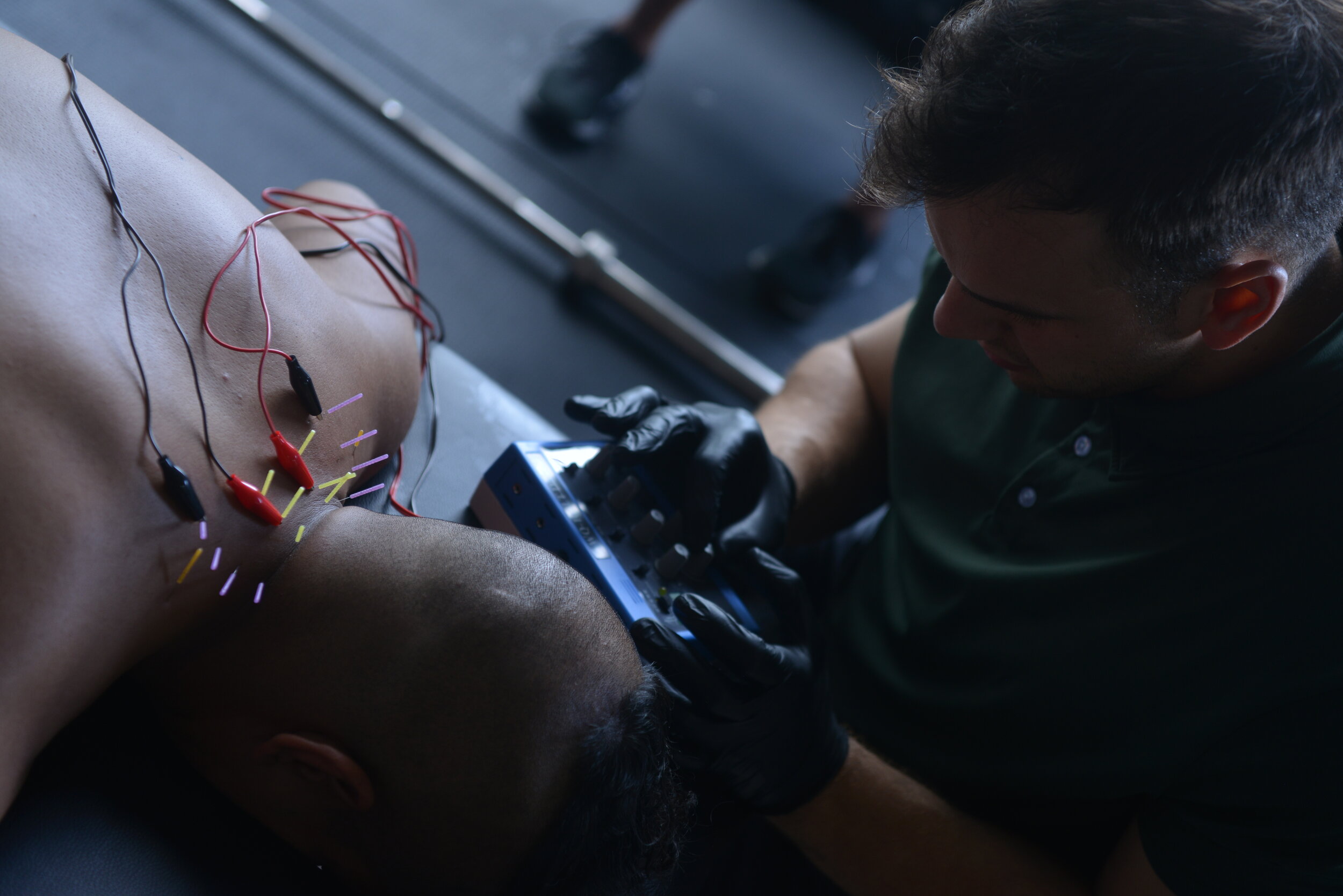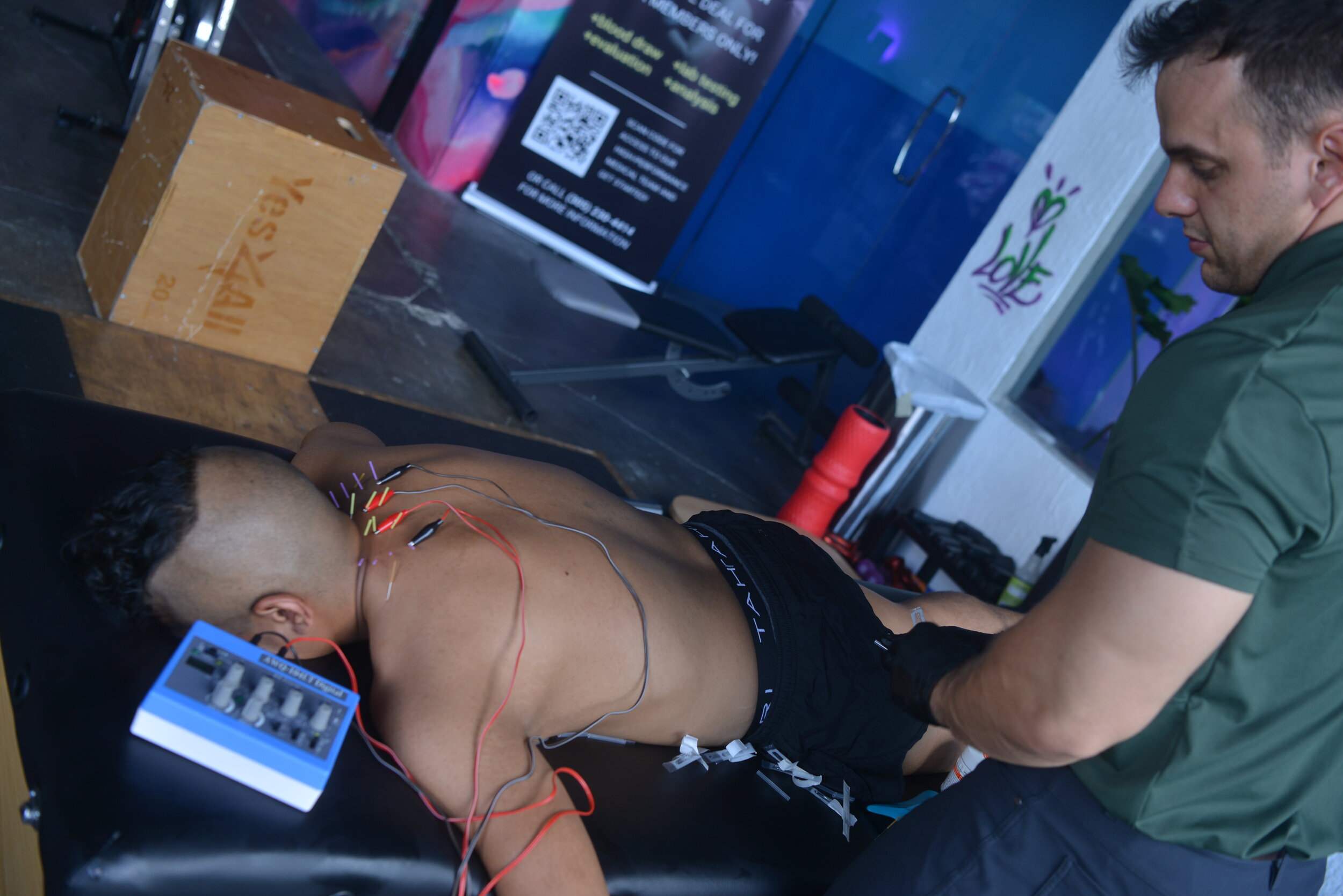PhysioLogix’s Dry Needling Services
WHAT IS DRY NEEDLING?
Dry needling uses long, thin needles that are inserted deep into a muscle, tendon, ligament or other target tissue. Dry needling practitioners are trained through different academies and qualified via their local state and licensing boards to treat musculoskeletal conditions using a variety of appropriately sized needles. The act of putting the treatment needle into tissues has been shown to have analgesic or a pain relieving effects for many.
SO, IS DRY NEEDLING THE SAME AS ACUPUNCTURE?
Dry Needling is not acupuncture. Acupuncture is considered eastern medicine and dates back centuries ago with different rationale of treatment. Dry Needling is based on Western medicine and is continually studied in the current literature with evidence-based articles being produced and sports and science journals monthly. Doctors of physical therapy all over the United States have been training, studying and fighting for the right to practice this clinical skill on their patients and have succeeded in obtaining the right to practice in Florida.
The Two Approaches of Dry Needling
PHYSIOLOGICAL RATIONALE
The way that we at PhsioLogix aims our needles are based off of an objective and repeatable physiological approach. This ensures that each needle serves a pointed purpose targeted at the target tissue (the area that is typical the cause or result of the pain). A strong physiological rationale is used so even if there is very little neurological effect, we can at least affect as much target tissue as possible and create the greatest possible change in post-treatment state for the patient.
When a clinician at PhysioLogix is putting a needle into a target tissue, the goal is to penetrate the area where the neurons connect with the muscles cells (also known as the motor end plate). There are a few different techniques that we use when inserting the needles that can have a substantial effect on patient outcomes.
Sometimes, the therapist will rotate the needle itself which will pull more fascia into the needles grasp (like spaghetti on a fork). This action will collect more connective tissue and fibroblasts in the muscle tissue which leads to not only more alignment of the connective tissue in the region but also a synthesization of pain relieving chemicals like adenosine which flows into the target area.
Another technique is pistoning. Pistoning is when you put into the target tissue then go in and out in repeated motions. This ensures the most tissue is affected with one needle. Each stroke trough will capture more and more motor endplates, muscle cells, fascia and microvascular units as possible, enhancing the local effect of each needle. Another technique that is a form of pistoning is ‘fanning.’ Fanning is the same concept but with the needle being flared out radially with each stroke.
A lot of therapists will look for a physical notification that they have hit the right area such as a muscle twitch. Although it is presumed to be a sign of a relaxation of the taut tissue it is by no means necessary to produce the desired effect that the practitioner is looking fort. It is important to know that the certification obtained by the practitioners at PhysioLogix Sports PT come from a school of thought which did not base its results on only targeting trigger points but rather the more objective and reliable anatomical based certification process provided by the Spinal Manipulation Institute.
Eventually all of the physical damage caused from the needles can regenerate within a week or so following treatment.
NEUROLOGICAL RATIONALE
Needling also can treat pain though its effect on the central nervous system (CNS). The nervous system contains a bunch of different nerve fibers that transmit a lot of different information to the brain. All Of these axons enter the part of the nervous system called thee dorsal horn. It is here that the needles can have an effect on how your body is interpreting the pain!
The act of dry needling can also activate something called the endogenous opiod system. This is the like the brain’s own way of providing an analgesic effect, much like that of prescription opioids, to reduce pain. Dry needling can trigger this system, reducing pain in an instant and for the following days.
Dry needling also has an effect through something called the diffuse noxious inhibitory control aspect of pain or conditioned pain modulation. Basically, this is the effect can also be referenced as the pain inhibits pain theory. Basically, the noxious or painful stimuli of the needle can reduce pain because it is painful itself. Your central nervous system adjusts its threshold for what it can tolerate based on the new, novel, and different pain stimulus from the needle itself.
WHAT CAN I TREAT WITH DRY NEEDLING?
Dry Needling can be utilized to treat a multitude of musculoskeletal dysfunctions including low back, neck, shoulder, lower extremity pain, TMJ pain and even including headaches. If you are interested in trying trying needling out for yourself we at Physiologix urge you to call directly and speak with the doctors today to see if you would be a good candidate for the therapy.
Conditions PhysioLogix Treats with Dry Needling:
TMJ
Headaches
Knee Pain
Shoulder Pain
Shoulder Impingement Pain
Biceps Tendonitis Pain
Surgical Scar Reduction
Low Back Pain
Neck Pain
Post Surgical Pain


